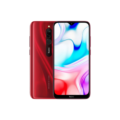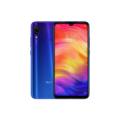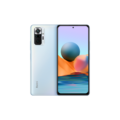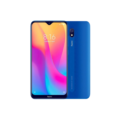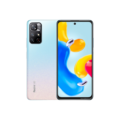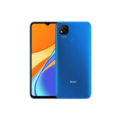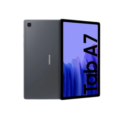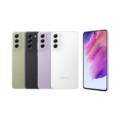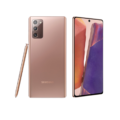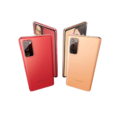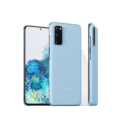Redmi Note 11 Pro Harga Malaysia
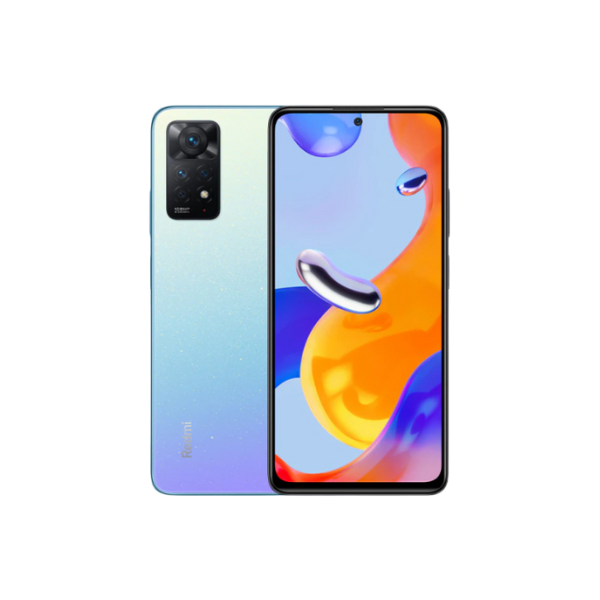

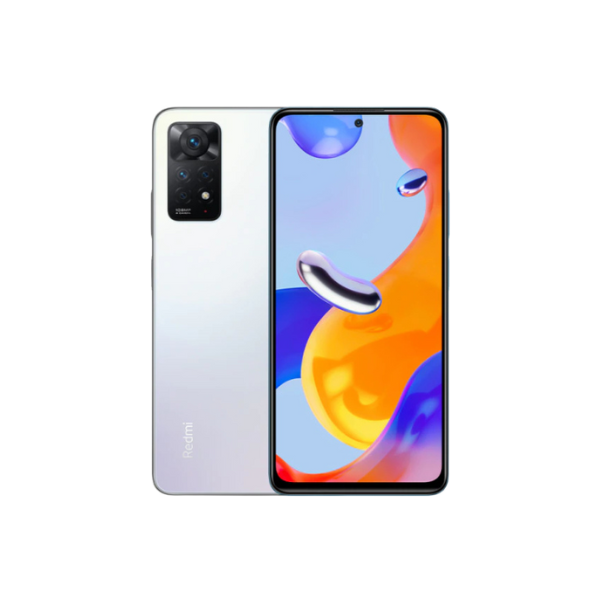
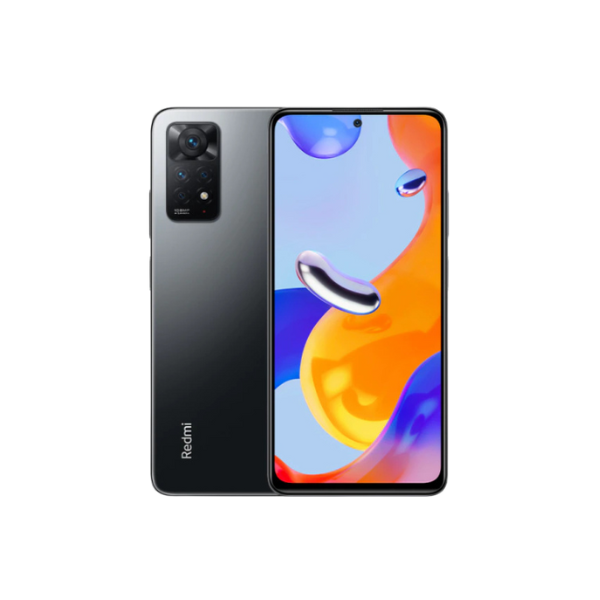
- CPU: Mediatek Helio G96 (12 nm)
- RAM: 6 GB, 8 GB
- Storage: 64 GB, 128 GB
- Display: Super AMOLED
- Camera: 108 MP Quad Camera
- OS: Android 11, MIUI 13
- AnTuTu Total Score: 261309 (v8), 319093 (v9)
Redmi Note 11 Pro Harga Malaysia Spesifikasi Malaysia
General
| Device Type | Smart Phone |
| Model | 2201116TG, 2201116TI |
| Announced | 26 January, 2022 |
| Released | 18 February, 2022 |
| Status | Available |
| Price | RM999 |
Design
| Type <strong>Design Type</strong> called form factor refers to a mobile phone's size, shape, and style as well as the layout and position of major components of phone. There are three major form factors seen in mobile phones => bar phones, folding phones and sliding phones. | Bar |
| Dimensions | 164.2 x 76.1 x 8.1 mm (6.46 x 3.00 x 0.32 in) |
| Weight | 202 g (7.13 oz) |
| Body Type | Glass front (Gorilla Glass 5), glass back |
| Protection | IP53, dust and splash resistant |
| Colors | Graphite Gray (Stealth Black), Polar White (Phantom White), Star Blue |
Network
| 4G Network |
1, 2, 3, 4, 5, 7, 8, 12, 13, 17, 20, 26, 28, 32, 38, 40, 41, 66 - International 1, 3, 5, 8, 40, 41 - India |
| SIM <strong>SIM</strong> (Subscriber Identity Module) is a small card that contains mobile network subscriber's account information. This allows the phone using the card to attach to a mobile network. The SIM card is most commonly associated with GSM and UMTS mobile networks. Moving a SIM card from one phone to another allows a subscriber to switch mobile phones without having to contact their mobile network carrier. SIM cards can also be used by a phone to store limited amounts of data, such as phone numbers and text messages. | Nano SIM |
| Dual SIM | dual stand-by |
Display
| Display Type <strong>Display Technology => </strong> A number of display technologies and types used in mobile phones => TFT (Thin Film Transistor), IPS (In-Place Switching), OLED (Organic Light Emitting Diode), AMOLED (Active-Matrix Organic Light-Emitting Diode), Super AMOLED (an even advanced version of AMOLED), Resistive Touchscreen (Resistive touchscreens contain two layer of conductive material with a very small gap between them which acts as a resistance), Capacitive Touchsceen (Capacitive touchscreen technology consists of a layer of glass coated with a transparent conductor) | Super AMOLED |
| Size | 6.67 inches, 107.4 cm2 (~86.0% screen-to-body ratio) |
| Resolution | 1080 x 2400 pixels, 20:9 ratio |
| Display Colors <strong>Display Colors</strong> is refers to the number of different shades of colors that the screen is capable of displaying => 64K colors, 256K colors and 16 million colors, Obviously 16M is highest available range of colors and better than others. | 16 Millions Colors |
| Pixel Density <strong>Pixel Density (PPI)</strong> is refers to the concentration of pixels on a particular display, measured in pixels per inch (ppi). Pixel density is calculated by dividing the diagonal pixel resolution of a display by its diagonal size, higher pixel density better display quality. | (~395 ppi density) |
| Touch Screen | Yes, Multitouch |
| Display Protection <strong>Display Protection => </strong> Gorilla Glass is a special alkali-aluminosilicate glass shield with exceptional damage resistance that helps protect mobile displays from scratches, drops, and bumps of everyday use, It is always better to go for a smartphone with Gorilla Glass for that added protection and peace of mind. | Corning Gorilla Glass 5 |
| Features |
120Hz refresh rate 700 nits 1200 nits (peak) |
Camera
| Rear Camera <strong>Camera</strong> is able to capture photographs and usually videos, The most important characteristics of a camera are the resolution (measured in megapixels), lens focus type (fixed or automatic), higher megapixel cameras are known to capture higher quality photos, but not always a good measurement of the photos quality. |
Quad Camera 108 MP, f/1.9, 26mm (wide), 1/1.52&amp;amp;quot;, 0.7µm, PDAF 8 MP, f/2.2, 118˚ (ultrawide) 2 MP, f/2.4, (macro) 2 MP, f/2.4, (depth) |
| Front Camera | 16 MP, f/2.5, (wide), 1/3.06&amp;amp;quot; 1.0µm, 1080p@30fps |
| Image | 1080p |
| Video | 1080p@30fps |
| Camera Features | LED flash, HDR, panorama |
Software
| Operating System <strong>OS => </strong> Every computer system run on a base software called Operating System (OS). Operating System controls all basic operations of the computer (such as smartphone, PDAs, tablet computers and other handheld devices). The Operating System allows the user to install and run third party applications (apps), apps are used to add new functionality to the device. | Android 11 |
| User Interface <strong>UI</strong> or user interface of a device is the look and feel of the on-screen menu system. How it works, its color scheme, how it responds to button presses, all of these things are part of the user interface. | MIUI 13 |
Hardware
| Chipset <strong>Chipset</strong> is a group of integrated circuits designed to perform one or a more dedicated functions, often with real time computing constraints, Popular smartphones are equipped with more advanced embedded chipsets that can do many different tasks depending on their programming. | Mediatek Helio G96 (12 nm) |
| CPU <strong>CPU</strong> (Central Processing Unit) mostly known as processors, CPU processes instructions in order to carry out certain functions that make your device operate properly. Processors are often described as the brain of computers, smartphones and tablets, Smartphones and tablets rely on processors to carry out their every task, Processors are an incredibly important factor in selecting any type of computing device, including your smartphone. | Octa-core (2x2.05 GHz Cortex-A76 & 6x2.0 GHz Cortex-A55) |
| GPU <strong>GPU</strong> (Graphics Processing Unit) is a single-chip processor designed to rapidly manipulate and alter memory to accelerate the creation of images in a frame buffer intended for output to a display, This includes things such as lighting effects, object transformations, and 3D motion. | Mali-G57 MC2 |
| RAM (Memory) <strong>RAM</strong> (Random Access Memory) is a type of computer memory that can be accessed randomly, any byte of memory can be accessed without touching the preceding bytes that allows information to be stored and accessed quickly from random locations. RAM is the most common type of memory found in computer systems, smartphones, tablets and other electronic devices. | 6 GB, 8 GB |
| Internal Storage <strong>Internal Storage</strong> is a data storage space (flash memory) mostly used in smartphones, tablets and other electronic devices where operating system, apps, music, photos, videos, files and other user data Is stored. | 64 GB. 128 GB |
| Card Slot <strong>Memory Card Slot</strong> is a special slot for inserting a memory card. Memory cards allow you to expand the phone's built-in memory, A memory card (sometimes called a flash memory card or a storage card) is a small storage medium used to store data such as text, pictures, audio, and video, for use on small, portable or remote computing devices such as mobile phones, mp3 players, digital cameras. | microSDXC (uses shared SIM slot) |
| Sensors <strong>Sensors</strong> are electronic components that detects and responds to some type of input from the physical environment. The specific input could be light, heat, motion, moisture, pressure and location, The output is generally a signal that is converted to use in computing systems, a location sensor, such as a GPS receiver is able to detect current location of your electronic device. |
Fingerprint (side-mounted), accelerometer, gyro, compass Virtual proximity sensing |
Battery
| Battery Type <strong>Battery Type => </strong> Cell phones run on various kinds of batteries depending on the manufacturer, phone size or shape and features. There are basically four types of cell phone batteries => Lithium Polymer, Lithium Ion, Nickel Metal Hydride and Nickel Cadmium. | Li-Poly (Lithium Polymer) |
| Placement | non-removable |
| Capacity <strong>Battery Capacity</strong> is a measure (typically in Amp-hr) of the charge stored by the battery, and is determined by the mass of active material contained in the battery. The battery capacity represents the maximum amount of energy that can be extracted from the battery under certain conditions. | 5000 mAh |
| Charging | 67W wired, PD3.0, QC3, 51% in 15 min (advertised) |
Connectivity
| Bluetooth <strong>Bluetooth</strong> is a wireless communications technology for exchanging data between mobile phones, headsets, computers and other network devices over short distances without wires, Bluetooth technology was primarily designed to support simple wireless networking of personal consumer devices. | 5.1, A2DP, LE |
| Wi-fi <strong>Wi-Fi</strong> is a popular wireless networking technology using radio waves to provide high-speed network connections that allows devices to communicate without cords or cables, Wi-Fi is increasingly becoming the preferred mode of internet connectivity all over the world. | Wi-Fi 802.11 b/g/n/ac, dual-band, Wi-Fi Direct |
| Wi-fi Hotspot | |
| USB | USB Type-C 2.0, USB On-The-Go |
| GPS <strong>GPS</strong> The Global Positioning System is a satellite-based radio navigation system, GPS permits users to determine their position, velocity and the time 24 hours a day, in all weather, anywhere in the world, In order to locate your position, your device or GPS receiver must have a clear view of the sky. | GPS, GLONASS, BDS, GALILEO |
| NFC <strong>NFC</strong> (Near field communication) is a set of standards for smartphones and similar devices to establish peer-to-peer radio communications with each other by touching them together or bringing them into proximity, usually no more than a few inches. | |
| Wireless Charging <strong>Wireless Charging</strong> (Inductive Charging) uses an electromagnetic field to transfer energy between two objects. This is usually done with a charging station. Energy is sent through an inductive coupling to an electrical device, which can then use that energy to charge batteries or run the device. | No |
Media
| Loudspeaker | Yes, with stereo speakers |
| Handsfree | 3.5mm jack |
Redmi Note 11 Pro telah menjadi salah satu telefon bajet yang direka untuk pelbagai audiens dan dengan harga yang lebih berpatutan serta spesifikasi yang sebanding.
Kedatangan Redmi 9T yang terbaru adalah berita baik, dan di Eropah, ia telah menjadi salah satu rangkaian telefon pintar yang paling berjaya. Sekarang, kami akan memberikan pandangan jujur kami mengenai Redmi Note 11 Pro dalam ulasan berikut.
Dengan munculnya beberapa sub-jenama yang kukuh dari Xiaomi, seperti dengan rangkaian Note sebagai jenama utamanya, atau dengan jenama Poco, jenama Xiaomi telah menjadi jenama yang menarik, dengan jualan yang baik, harga yang agresif, tetapi dengan sentuhan prestasi, paparan, dan spesifikasi yang sangat baik.
Reka Bentuk dan Binaan
Redmi Note 11 hadir dalam kotak kertas putih, dan pakej runcit telefon ini juga dilengkapi dengan pengecas kuasa 67W. Ia mempunyai kabel USB bermutu 6A, dan pakej ini turut disertakan dengan sarung pelindung plastik yang transparan.
Redmi Note 11 Pro tiada filem perlindungan di skrinnya, dan sama seperti model-model lama, anda tidak akan menjumpai kaca filem perlindungan di skrin paparannya.
Kini, kerana memasang skrin perlindungan sendiri kadang-kadang adalah idea yang tidak baik, adalah baik untuk menghubungi pengeluar jika mereka sudah menyertakannya.
Ia datang dengan saiz 164x76x8 mm, dengan berat 202 gram, dan dengan Gorilla Glass 5, dengan IP53, perlindungan percikan dan habuk. Untuk warnanya, kami telah membeli versi biru Redmi Note 11 Pro.
Paparan
Paparan untuk Redmi Note 11 Pro datang dengan skrin Super AMOLED, 6.67 inci lebar, dengan kadar segar maksimum 120Hz.
Ia mempunyai HDR10, bersama dengan kecerahan 700 hingga 1200 nit semasa prestasi puncak. Untuk resolusi maksimumnya, ia datang dengan resolusi 1080p x 2400p, nisbah aspek 20:9, dan dengan ketumpatan 395 PPI.
Untuk prestasi paparannya, 120 Hz terasa baik dalam permainan, dan ia akan membuktikan peralihan dan animasi yang lebih lancar untuk aplikasi dan permainan anda.
Ia juga mempunyai kedalaman nisbah dan resolusi skrin dengan warna yang tajam, dan keseluruhan sentuhan yang sangat baik dalam paparan.
Kamera
Spesifikasi kamera bagi Redmi Note 11 datang dengan pilihan hebat untuk kamera utama lebar. Ia datang dengan 108 MP, 26mm, dan dengan sudut ultra lebar.
Kamera makro 2MP, dan kamera kedalaman 2MP, menghasilkan warna yang tajam yang pasti akan hebat untuk fotografi.
Bagi kamera hadapan, ia datang dengan 16 MP, untuk kamera selfie lebar. Seperti yang dijangka, ia tidak datang dengan kamera pakar selfie yang memukau, tetapi ia menggantikan dengan kamera belakang yang hebat.
Perisian
Redmi Note 11 datang dengan Android 11, dilengkapi dengan MIUI 13 yang baru ditingkatkan, dan ia turut disertai dengan spesifikasi hebat untuk melengkapinya.
Perisian tambahan dan alat seperti pembaca cap jari dan port inframerah juga ada. Redmi Note 11 Pro 4G juga disokong oleh rangkaian 5G.
Prestasi
Dengan spesifikasi Xiaomi Redmi Note 11 Pro datang dengan cip Mediatek Helio G96, dengan pemproses Octa-core 2.05 GHz, inti cortex 2.0 GHz dengan 8 inti.
Ia datang dengan 64GB ingatan dengan ingatan tambahan 128 GB. Untuk pilihan RAM, ia adalah 6 GB RAM, dengan tambahan pilihan 8GB RAM.
Dari segi prestasi, ia mempunyai prestasi keseluruhan yang cukup baik untuk telefon bajet sederhana.
Dari segi prestasi, ia boleh dibandingkan dengan banyak telefon pintar bajet sederhana lain, jadi secara keseluruhan, jika anda mengharapkan telefon sederhana untuk permainan dan penyuntingan video.
Hayat Bateri
Hayat bateri Redmi Note 11 datang dengan 5,000 mAh, pengcasan pantas 67W, seperti yang diiklankan, ia boleh dicas 50% dalam 15 minit, dengan sistem penghantaran kuasa 3.0, dan cas pantas 3+.
Harga
Harga Redmi Note 11 Pro Xiaomi datang dalam pelbagai pilihan, tetapi harga asas bermula dari RM999, untuk 6GB RAM dan 128GB ingatan, ia ditambah dengan harga RM1,149. Versi 128GB.
Anda boleh melawat laman web rasmi Xiaomi di MI.COM
Soalan Lazim
Apakah warna-warna Redmi Note 11 PRO?
Warna bagi Redmi Note 11 Pro datang dalam pelbagai warna seperti Graphite Gray, Stealth Black, Polar White, Phantom White, dan Star Blue. Walau bagaimanapun, sesetengah warna tidak tersedia di kawasan tertentu, seperti Phantom Black atau Phantom White.
Berapakah Kadar Segar (Hz) Paparan Redmi Note 11 PRO?
Redmi Note 11 datang dengan kadar segar maksimum 120 Hz.
Adakah Redmi Note 11 PRO sudah menyokong rangkaian 5G?
Ya, ia menyokong rangkaian 4G, serta rangkaian internet 5G.

